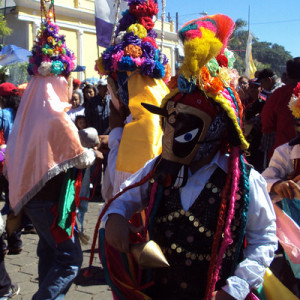 Families adopting from Nicaragua have to spend a significant amount of time in country completing the adoption process. If you choose to adopt from Nicaragua, we encourage you to use your time in country as a wonderful opportunity to immerse yourself in the rich history and culture of Nicaragua. When you do come home with your child, don’t cut off all ties to that heritage, instead, preserve it for your child and embrace it as a family. Following are some simple ideas for incorporating Nicaraguan culture into your life.
Families adopting from Nicaragua have to spend a significant amount of time in country completing the adoption process. If you choose to adopt from Nicaragua, we encourage you to use your time in country as a wonderful opportunity to immerse yourself in the rich history and culture of Nicaragua. When you do come home with your child, don’t cut off all ties to that heritage, instead, preserve it for your child and embrace it as a family. Following are some simple ideas for incorporating Nicaraguan culture into your life.
- Cook Authentic Nicaraguan Food The food of Nicaragua is influenced by Mexican, Honduran and Guatemalan cuisines. Many dishes include corn and beans. Corn tortillas are usually present at every meal; unlike in other Latin American countries, corn tortillas in Nicaragua are typically larger in size made from white corn. Look for recipes of some famous Nicaraguan dishes and try them out. Some Nicaraguan specialties include: Gallo Pinto, Nacatamales, Quesillos, Indio Viejo and Tres Leches Cake. The internet is a great resource for recipes (if you didn’t learn some during your stay in country)!
- Celebrate Holidays Nicaraguan Style Learn about the holidays that are celebrated in Nicaragua and incorporate traditions into your own holiday celebrations. Some ideas to consider:Easter – Believe it or not, beach parties have become a traditional Easter custom in Nicaragua. While many families may not have access to a beach (or warm weather) in the early spring, an indoor party with beach balls and picnic on a beach towel would be fun!Christmas – Christmas caroling is a large part of the La Purisma and La Griteria celebrations during the Christmas season; gather family and friends and go out caroling together or just gather together for fellowship and singing. On Christmas Eve, stay up until midnight and give Christmas hugs; if you think your neighbors won’t mind, you can also set off a few fireworks as is the custom in Nicaragua.New Years – Dinner is served and the first party of the New Year starts at midnight. If your kids are too young to stay up, instead have a first party of the year at breakfast time on New Year’s Day.Independence Day (September 15) – Hang up the flag of Nicaragua and dress in blue and white!
- Attend Local Cultural Festivals – It is likely that you will find a local festival that incorporates Latin American culture and food. Chicago hosts the “Taste of Latin America” Festival, Charlotte hosts an annual Latin American Festival, and New York City celebrates a Latin American Cultural Week incorporating music, dance, theater and fashion, film and more.
- Use Spanish – After spending several months in Nicaragua during the adoption process, you will likely have learned some easy Spanish words and phrases. As your child grows, you might consistently tell him, “I love you,” in Spanish, count in Spanish, and learn colors in Spanish. Bi-lingual books and children’s DVDs are typically available at libraries and bookstores as well.
- Keep Nicaraguan Items around the House – When in Nicaragua, many families purchase authentic Nicaraguan items such as artwork, knick-knacks, blankets and flags for display in the home. Some families may want to designate a specific room in the house to display all of the Nicaraguan items, and other families may choose to place items in various locations around the home.
These few ideas may just get you started. If you adopted a very young child, the child’s interest in Nicaragua may develop over the years, which may encourage your family to delve a little deeper into the rich culture and heritage that Nicaragua has to offer. You may even plan a trip back to Nicaragua to experience some of these customs in their original form!
For more information on adopting from Nicaragua, please contact us.
Photo Credit: Zenia Nuñez
